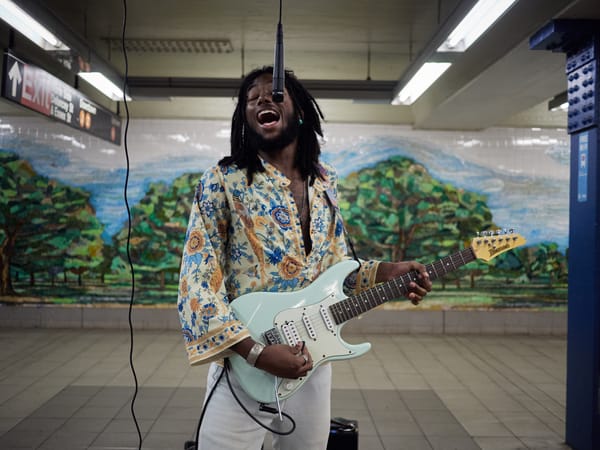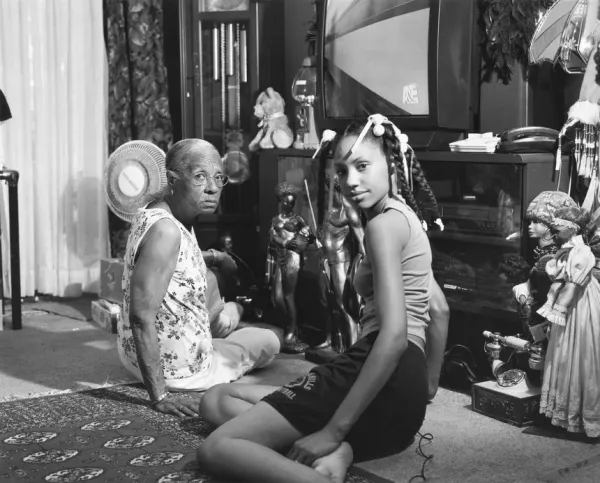Shifting the Gaze with Ronan McKenzie

Photography is more than image-making. In the hands of the right artist, it becomes a form of care, a way of seeing, holding, and honouring people and their stories. For Black creatives in Britain, this has often meant reclaiming space and reshaping narratives. It’s about challenging how we’ve been seen, and choosing how we want to be seen now.
One of the standout figures in this evolving conversation is Ronan McKenzie.
This blog post explores McKenzie’s work as a photographer, curator, and founder of creative platform Home. It looks at how her work gently but firmly challenges dominant visual languages. It also explores why emotional connection is central to her process and how she uses the Black gaze to reimagine representation on her own terms.
Introducing Ronan McKenzie
Ronan McKenzie is a London-born multidisciplinary artist whose practice blends photography, fashion, curation, and spatial design. From her early portraiture to her latest creative projects, her work has always felt intimate and intentional. She captures people in ways that feel grounded, connected, and full of care.
McKenzie’s journey began in fashion editorial photography, with commissions for publications like i-D, Vogue, and Dazed. But even in these glossy settings, her images resisted surface-level beauty. Her portraits have depth. Her sitters are relaxed, rooted, and visibly seen.
In 2020, she founded Home, an independent art space in North London. The name is no coincidence. Home was created as an antidote to the often exclusionary nature of art institutions. It centres Black and marginalised creatives, offering a warm, accessible space for expression, collaboration, and healing.
Whether behind the camera or curating an exhibition, McKenzie brings the same ethos: people first. Her work invites you in. Not to observe, but to connect.
Reclaiming the Frame
Too often, Black bodies have been framed through lenses not our own. Exoticised. Pathologised. Flattened into stereotypes. McKenzie’s work gently resists all of that. She doesn’t just photograph her subjects. She builds relationships with them. The result is imagery that feels collaborative and deeply respectful.
Her portraits often take place in familiar spaces, a living room, a studio, a park. These environments are not just backgrounds. They are part of the story. They hold meaning. They offer context. They soften the gaze, letting the subject shape how they are seen.
Clothing also plays a vital role. McKenzie often styles her sitters, using garments that reflect personal taste, cultural memory, or shared aesthetics. There’s often a sense of nostalgia. She nods to Black British style traditions, family photo albums, and diasporic heritage.
Her use of colour and light is subtle and painterly. Warm tones, soft textures, and natural light create a feeling of tenderness. In McKenzie’s hands, the camera becomes a way to say, “I see you, and I honour you.”
Practising the Black Gaze
The Black gaze is about more than just who’s holding the camera. It’s about intention. It’s about telling stories from within rather than projecting them from the outside. Ronan McKenzie embodies this fully.
Her gaze is not voyeuristic or extractive. It’s grounded in empathy. There is a quiet power in the way she allows her subjects to be, to be proud, to be soft, to be complex. In a world that often asks Black people to perform or prove, her work offers release.
McKenzie also applies the Black gaze through her curatorial work. At Home, she doesn’t just hang pictures on walls. She thinks about how the space feels and how it holds people. This is part of her practice too. Reimagining who art spaces are for. Making room for others. Shifting the conditions under which creative work is made and received.
Lessons from Ronan McKenzie’s Practice
McKenzie’s approach offers valuable insights for artists, organisers, and anyone seeking more just forms of creativity:
- Create with care. Relationship is at the heart of her work, both in front of and behind the lens.
- Redesign the frame. Don’t just fit into existing systems. Build your own.
- Honour the everyday. Beauty lives in real spaces, real people, real lives.
- Make room for others. Use your platform to lift others, not just yourself.
- Trust your eye. McKenzie’s visual voice is strong because it’s authentic and personal.
Expanding the Lens
Ronan McKenzie is part of a wider movement of Black British artists using photography to build new worlds. Worlds where people are seen in full colour, full feeling, full truth.
She stands alongside creatives like:
- Karis Beaumont, whose bold and layered portraits celebrate Black British identity with pride and precision
- Adama Jalloh, whose raw, street-level portraits explore belonging, resilience, and everyday joy
- Campbell Addy, whose high-concept editorial work weaves together themes of queerness, beauty, and Blackness
Each of these artists brings their own perspective. Together, they offer a richer, more complex visual language for who we are and who we can be.
Conclusion
Ronan McKenzie’s work reminds us that photography is not just about what we see. It’s about how we see. Her images reflect a gaze that is soft but radical, loving but exacting. A gaze that challenges hierarchy and invites connection.
Through her photography, her space, and her practice, McKenzie is shifting the gaze with clarity, care, and courage. She shows us that representation is not only about visibility. It is also about ownership, emotion, and integrity.
By learning from her work, we move closer to a creative culture where more of us feel at home. Where more of us are seen not as symbols, but as whole human beings, worthy of attention, care, and joy.
Contribute
Through theBLKGZE, we don’t just reflect the world, we reshape it. Your story matters. Share it. Honour it. Hold space for others. This is where truth lives and vision leads.
We invite Black photographers to contribute in two meaningful ways through story and image.






